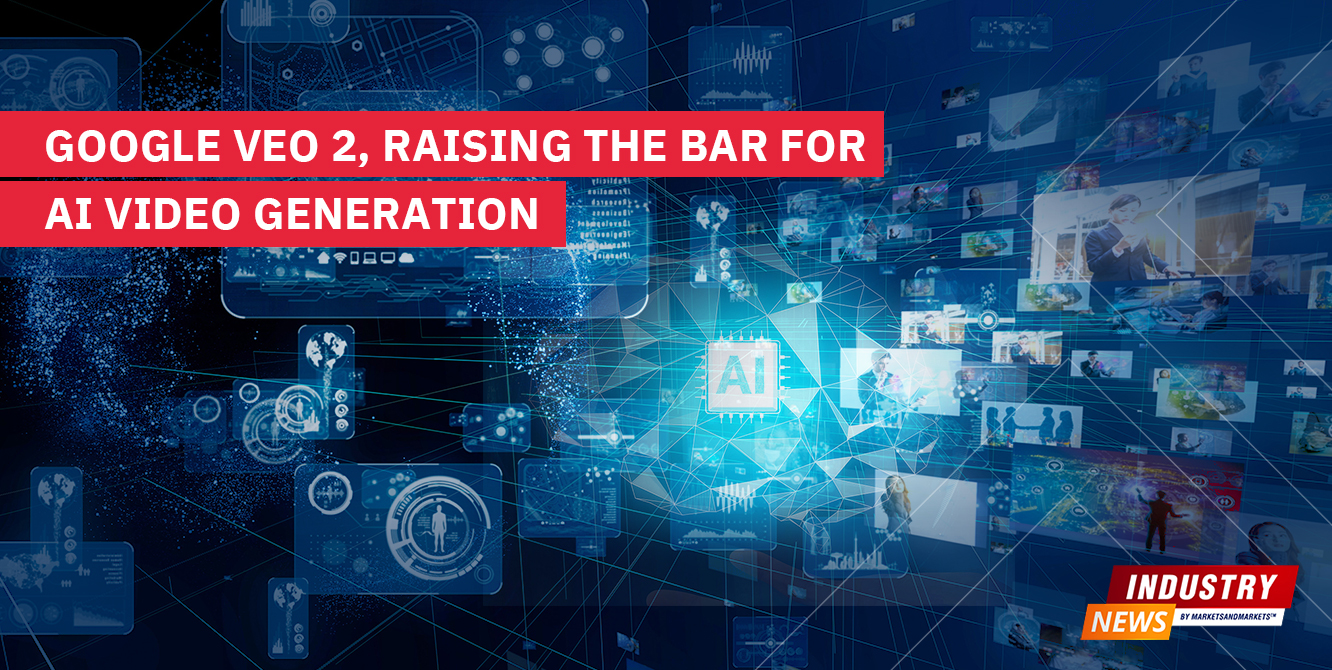Impact of AI Powered Sustainability Products from Market Leaders 2023

This News Covers
- Top AI-powered sustainability products in 2023
- Top companies & countries that are using AI for a greener future
- How much energy OpenAI consumes to serve answers?
- How many KwH are consumed to generate an AI image or answer?
- How sustainable is it to power Generative AI?
- What role is AI playing in sustainable fashion in 2023?
The convergence of AI and sustainability in 2023 is driving transformative change, is reshaping industries, and is accelerating progress towards a sustainable future.
In the evolving landscape of 2023, the integration of artificial intelligence (AI) and sustainability is driving notable advancements, reshaping industries, and fostering a greener future. This synergistic fusion of intelligence and ecological consciousness has given rise to innovative products that promote sustainable practices across diverse sectors.
One significant area where AI is making substantial progress is in optimizing business strategies and operations. By harnessing AI's analytical capabilities, companies can leverage advanced algorithms and machine learning to make data-driven decisions, streamline processes, and mitigate their environmental impact. This efficiency translates into optimized resource utilization, waste reduction, and improved overall sustainability performance.
In the agricultural sector, AI-powered systems optimize key processes such as irrigation, fertilizer usage, and pest management. Real-time data analysis and insights enable farmers to make informed decisions, minimizing water waste, chemical inputs, and fostering sustainable farming practices.
Moreover, AI plays a pivotal role in driving sustainability initiatives across industries. By leveraging AI algorithms for data analysis, companies identify areas for improvement, reduce product defects, enhance customer satisfaction, and work towards achieving sustainability goals. This integration not only boosts operational efficiency but also contributes to environmental conservation and resource preservation.
On a broader scale, countries are utilizing AI to address environmental challenges. Machine learning algorithms aid in monitoring and managing air quality, optimizing energy systems, safeguarding biodiversity, and enhancing public transportation efficiency. These endeavors foster sustainable development, creating smarter and more livable communities.
While acknowledging AI's potential in promoting sustainability, addressing its environmental impact during development and deployment is crucial. Researchers and industry leaders are actively striving to improve energy efficiency, develop sustainable infrastructure, and implement policies and regulations that prioritize environmentally responsible practices.
The integration of innovative products and initiatives empowers businesses and countries to optimize resource utilization, reduce waste, and foster a more economically and ecologically conscious society.
MarketsandMarkets welcomes these developments, and our editors take a look at them.
Top AI-powered sustainability products in 2023
Here are some additional AI-powered products in 2023 that cater to sustainability companies:
- SAS: SAS provides AI, machine learning, and Internet of Things (IoT) analytics to support greener business strategies and develop more efficient operations.
- CleanRobotics: CleanRobotics offers AI-powered systems that help agribusinesses optimize irrigation, fertilizer usage, and pest management, reducing water waste and chemical inputs.
- AIMultiple: AIMultiple provides insights on how AI can help achieve sustainability goals, such as reducing product defects and customer dissatisfaction.
- BCG: BCG uses prescriptive AI and optimization to improve efficiency in production, transportation, and elsewhere, thereby reducing carbon emissions and cutting costs.
- MAMAY: MAMAY has developed an AI-powered algorithm that manages the vast amounts of data required to digitize taste, which can help in sustainable agriculture.
- Clearbot: Clearbot has created autonomous technology to clean up plastic waste in our oceans and rivers, contributing to environmental sustainability.
Top companies that are using AI for a greener future
Please note that the specific AI-powered products related to sustainability might not be explicitly mentioned in all the sources. However, these companies are known to be actively involved in AI and its applications in the sustainability sector.
- Google: Google's AI for Social Good program includes initiatives to improve energy efficiency in data centers and combat overfishing using machine learning.
- Microsoft: Microsoft's AI for Earth program supports projects in biodiversity, agriculture, water, and climate change using AI technology.
- IBM: IBM's Green Horizon initiative uses AI and machine learning for accurate environmental forecasting and reducing air pollution.
- OpenAI: OpenAI has used machine learning to predict protein structures, contributing to advancements in biology and sustainability.
- DeepMind: DeepMind has used machine learning to optimize energy usage in Google's data centers, resulting in significant energy savings.
Top countries that are using AI for greener future
- Finland: Finland has utilized AI and machine learning to optimize heating and cooling systems, reducing energy consumption and emissions.
- China: China has employed AI to monitor and manage air quality, predicting pollution levels and providing emission reduction recommendations.
- Canada: Canada has used AI to monitor wildlife and protect biodiversity, analyzing images and sounds to track animal populations.
- Singapore: Singapore has applied AI to optimize public transportation systems, reducing energy use and emissions.
- Australia: Australia has utilized AI to monitor and manage water resources, predicting water demand and optimizing water treatment plant operations.
How much energy OpenAI consumes to serve answers?
Here's a summary of the energy consumption of OpenAI's models like GPT-3 and GPT-4:
-
Training Energy Consumption:
- GPT-3: The training of GPT-3 consumed 3,640 petaflop/s-days of computation, which is equivalent to the energy consumption of the average American household over 355 years.
- GPT-4: The training of GPT-4 consumed 4,600 petaflop/s-days of computation, which is equivalent to the energy consumption of the average American household over 450 years.
-
Inference Energy Consumption:
- GPT-3: The energy consumption for a single inference (generating responses to user queries) is about 1.2 x 10^-7 kWh, roughly equivalent to the energy used to load two web pages.
- GPT-4: The energy consumption per inference is slightly higher but still significantly lower than the energy used for training.
-
Efficiency Improvements:
- GPT-4 is 1.9x more parameter-efficient than GPT-3, meaning it can do more with the same amount of computational resources.
-
Carbon Offsetting:</li>
- OpenAI commits to purchasing carbon offsets for the CO2 emissions resulting from the electricity used in both training and inference.
-
Transparency and Accountability:
- OpenAI provides detailed information about the energy use and carbon emissions of its models in its research papers.
Please note that these figures are estimates and actual energy consumption can vary based on various factors.
How many KwH are consumed to generate an AI image or answer?
The exact energy consumption for generating an AI image or answer can vary greatly depending on the specific AI model used, the complexity of the task, and the efficiency of the hardware and data center infrastructure. However, as a rough estimate, the energy consumption for a single inference (i.e., generating a response to a user query) with GPT-3 is about 1.2 x 10^-7 kWh. This is roughly equivalent to the energy used to load two web pages.
For image generation tasks, the energy consumption is significantly higher, especially for models like DALL-E that generate complex images. However, the exact energy consumption for these tasks has not been publicly disclosed by OpenAI.
It's important to note that these figures are estimates and the actual energy consumption can vary. Also, AI companies like OpenAI are continuously working on improving the efficiency of their models and reducing their energy consumption.
How sustainable is it to power Generative AI?
- Energy Consumption and Carbon Emissions: Training AI models, particularly large ones, requires substantial computational power and energy. For instance, training a single AI model can emit more than 626,000 pounds of carbon dioxide equivalent, nearly five times the lifetime emissions of an average American car1. Furthermore, the carbon emissions due to AI are expected to increase by 300% by 2025.
- Data Centers and Cloud Computing: Data centers that store the vast amounts of data used by AI consume large amounts of electricity. The environmental impact of cloud computing has now surpassed that of the entire airline industry. A single data center can use as much electricity as 50,000 homes.
- Sustainable AI Practices: To make AI more sustainable, it's crucial to prioritize energy efficiency in all stages of its life cycle, including data storage, model training, and infrastructure deployment. This can involve prioritizing data quality over quantity, balancing model size and efficiency, developing energy-efficient infrastructure, implementing policies and regulations, and raising awareness and education.
- The Role of Policies and Regulations: Designing and implementing policies and regulations for the sustainable development of AI is crucial. This could involve creating rules that promote sustainable AI practices, offering rewards for energy-efficient AI systems, supporting sustainable AI research, and setting goals to reduce carbon emissions.
- Raising Awareness and Education: It's important to inform people, including AI researchers, developers, and policymakers, about the environmental impact of AI and the need for sustainable AI. Education programs can teach AI professionals about energy-saving techniques.
What role is AI playing in sustainable fashion in 2023?
- Dropel: Based in New York, Dropel works with clothing manufacturers to make garments last longer, thereby improving overall sustainability levels in the industry. Dropel's product is a technology-based process through which fabrics, predominantly cotton, undergo prior to garment manufacture. This process improves durability, drying speed, and overall breathability.
- Vividye: A Swedish startup aimed at providing sustainable fabric dye options to the fabric industry. Vividye's innovative technology allows for the redyeing of fabric without damaging it, which is crucial for the recycling of clothing rather than disposing of it.
- Hurr Collective: Founded by Victoria Prew and Matthew Geleta, Hurr Collective is a platform that uses real-time geo-tagging, AI-powered fashion stylists, and ID verification to make peer-to-peer wardrobe rental easier. This enhances sustainability and ethical fashion by allowing fashionistas and up-and-coming designers to rent out their wardrobes or showcase their designs.
- Good On You: An Australian fashion startup that connects conscious shoppers to sustainable fashion brands across the world. Good On You's brand rating system has quickly become one of the most comprehensive for the fashion space in the world, rating over 2,500 fashion brands for their sustainability and overall impact.
- Intellistyle: Based in London, Intellistyle is an AI-powered stylist platform that helps to pair people with the right garments for the right occasions. The platform allows users to sync outfits or single items from the app with their own images, ensuring that their purchases work with both their body and existing wardrobe before buying. This reduces buyer's remorse and the prevalence of unworn items, promoting sustainability in the fashion industry.
These companies are leveraging AI to not only enhance the customer experience but also to promote sustainability in the fashion industry. They are pioneering the way towards a more sustainable future in fashion.
References
GET AHEAD
Top Research Reports to Fuel Your Industry Knowledge- Sustainable Pharmaceutical Packaging Market by Raw Material (Plastics, Paper & paperboard, Glass, Metal), Product Type, Process (Recyclable, Reusable, and Biodegradable), Packaging Type(Primary Packaging), and Region - Global Forecast to 2027
- Sustainable Packaging Market by Material (Paper & Paperboard, Plastic, Metal, Glass), Process (Recycled, Reusable, Degradable), Function (Active, Molded Pulp, Alternate Fiber), Application (Food & Beverage, Healthcare, Others) & Layer - Global Forecast to 2020
- Green Technology & Sustainability Market by Offering (Carbon Accounting Software, ESG Reporting Tools, Compliance & Risk Management Tools), Application (Sustainable Supply Chain & Logistics, Energy & Emission Reduction) - Global Forecast to 2030
Editor's Pick

Healthcare
MiniMed™ 780G & Simplera Sync™: Smarter Tech, Simpler Lives for Diabetes Patients
Information and Communication Technology
Google Veo 2, Raising the Bar for AI Video Generation.jpg)
Automotive & Transportation
Trump’s Reciprocal Tariffs Stir Ripples Across the Automotive IndustryPODCASTS

Sustainable Digital Transformation & Industry 4.0
Sanjay Kaul, President-Asia Pacific & Japan, Cisco, and host Aashish Mehra, Chief Research Officer, MarketsandMarkets, in conversation on unraveling 'Sustainable Digital Transformation and Industry 4.0'
11 July 2023|S2E12|Listen Now

Generative AI
Prasad Joshi, Senior Vice President-Emerging Technology Solutions, Infosys, and host, Vinod Chikkareddy, CCO, MarketsandMarkets, in exploring the recent advances in AI and the generative AI space.
7 Nov 2023|S2E13|Listen Now
Download Whitepaper












